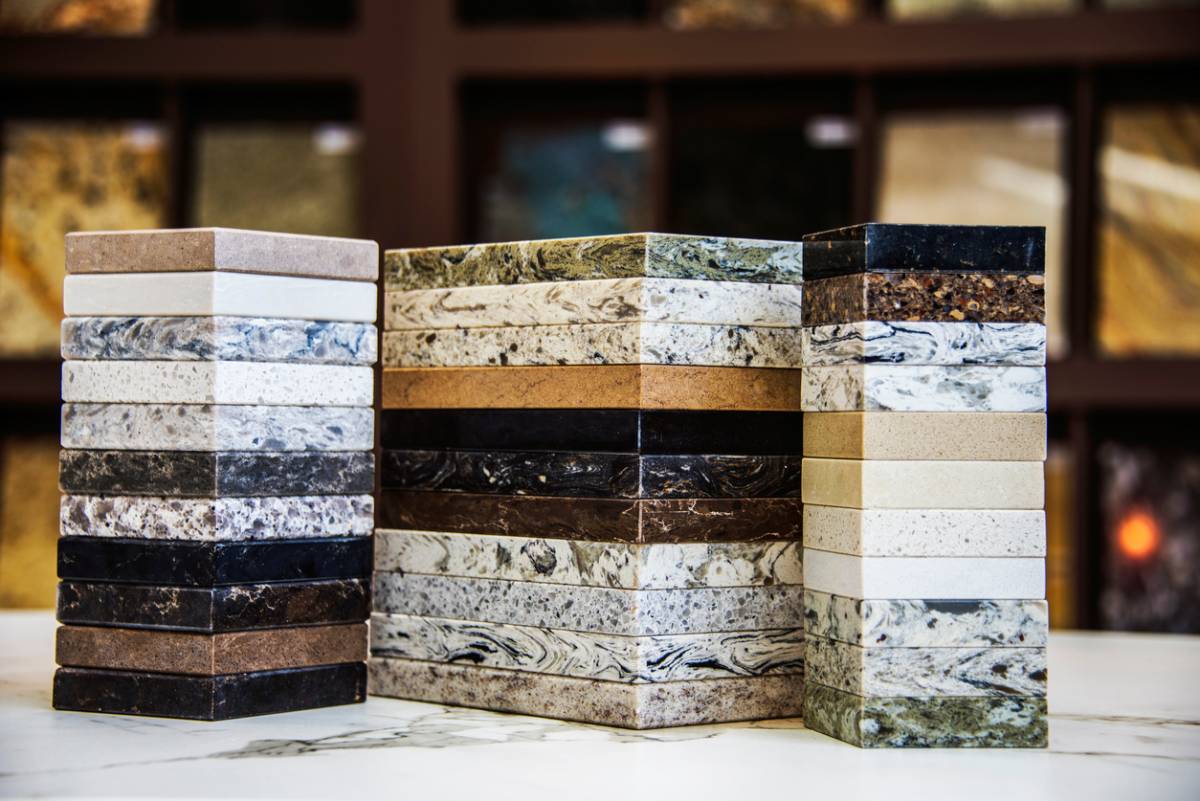When it comes to decorative and functional stone, sintered stone offers the best of both worlds. Sintered stone boasts superior strength, heat resistance, and scratch resistance. All of these features make sintered stone ideal for practically every use both indoor and outdoor. So, let’s compare sintered stone vs other materials.
Sintered Stone VS Other Materials
Of course, there are so many materials on the market that it can be difficult to find what’s right for you. To make your decision easier, let’s compare sintered stone kitchen countertops with other common materials.
The Benefits of Sintered Stone
- The Manufacturing Process: Sintered stone is an artificial product. It is made by compacting real stone using a combination of heat and pressure without ever liquefying the material. In a lot of ways it copies the natural formation of metamorphic rock, just without ever melting the stone down.
- Flexible Appearance: This process means that sintered stone can be made to look like virtually anything. Different colors, textures, and patterns are easily achieved. Your sintered stone can mimic granite or even wood grain in some cases.
- Unmatched Durability: On top of its versatility, sintered stone is incredibly durable. It’s highly heat resistant, scratch-resistant, and it doesn’t require any resealing or specialized cleaning products.
- Thin-Cut for Easier Install: As an added bonus, Neolith sintered stone can be cut incredibly thin, so you won’t have to reinforce your flooring or your cabinets to withstand the tremendous weight of natural stone.
The Pros and Cons of Granite
Granite is losing some of its previous popularity, but you still see it fairly often. While it is a highly durable material, it does come with significant downsides.
Porosity Problem:
Granite is porous. It has natural crevices that allow water and other materials to soak into the stone. With granite in your home this can be prevented by resealing your granite regularly.
Most households have to reseal their granite at least once a year. If you don’t then liquid and bacteria will seep into the stone. Inside those crevices, potentially dangerous bacteria and mold are almost impossible to clean. Without proper sealing, granite can be a health hazard.
The Weight:
Granite slabs have to be thick to maintain their strength. When you install something like a granite countertop, you have to account for the excessive weight of the stone. Kitchens that use granite often require reinforced flooring as well as reinforced cabinets to prevent collapse.
The Pros and Cons of Quartz
Quartz is another artificial option. Instead of using heat and pressure, quartz surfaces remain manufactured by blending bits of rock with resin. They don’t require sealant. And they can fit your specifications according to production. However, there remains one significant drawback.
Susceptible to Heat:
Resin is kind of like a glue. While it’s a bit more stable, it will melt when it comes into contact with high heat. That means that you have to be careful with quartz countertops in ways that you don’t with sintered stone or granite.
It should also be mentioned that the fumes coming from heated resin may be concerning. Fortunately, you really don’t have to worry about that as long as you are using trivets and cutting boards as directed.
A Look at the Market
There are literally endless materials available for use in your home. Everything from Formica to ceramic tiles are regularly used depending on budget and need. These three materials are currently at the top of the market.
All three offer higher durability, higher resistance, and beautiful surfaces. However, if we’re looking at it objectively, there isn’t much of a contest. Sintered stone offers the most benefits, no cons, and all of the choices you could possibly ask for.
